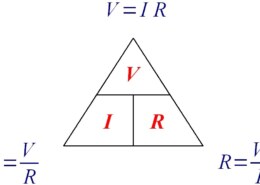What Is Ohm’s Law In Physics?
Scholars studying physics would come across ohm’s law due to their curriculum and might initially get confused with the question what is ohms law? Well your answer lies in this article.
Ohm’s law is one of the most fundamental and important laws guiding electrical and electronic circuits. It relates current, voltage, and resistance for a linear device in such a way that if two are known, the third can be calculated.
Since current, voltage, and resistance are three of the main quantities in circuits, this means that Ohm’s law is also immensely important.
What Is Ohm’s Law?
Ohm’s law states that the voltage or potential difference between two points is directly proportional to the current or electricity passing through the resistance, and directly proportional to the resistance of the circuit.
The formula for Ohm’s law is V=IR. This relationship between current, voltage, and relationship was discovered by German scientist Georg Simon Ohm.
Ohm’s law is used in all branches of electrical and electronic science.It is used to calculate the value of resistors needed in circuits, and it can also be used to determine the current flowing in a circuit where the voltage can be easily measured across a known resistance, but more than that, Ohm’s law is used in a vast number of calculations in all forms of electrical and electronic circuits – in fact anywhere that current flows.
Ohm’s Law Formula
The formula or equation for Ohm’s law is very simple.
Ohm’s law can be expressed in mathematical form:
V=IR
Voltage= Current× Resistance
Where:
V = voltage expressed in Volts
I = current in Ampere
R = resistance expressed in Ohm
The formula can be modified so that if any two quantities are known the third can be calculated.
I=V/R
R=V/I
The SI unit of resistance is ohms and is denoted by Ω
This law is one of the most basic laws of electricity. It helps calculate the power, efficiency, current, voltage, and resistance of an element in an electrical circuit.
Limitations of Ohm’s Law
Ohm’s Law does not apply to one-way networks. One-way networks allow current to flow in one direction. These types of networks consist of elements such as diodes, transistors, etc.
Ohm’s law also does not apply to nonlinear elements. Non-linear elements include elements whose current is not proportional to the applied voltage, i.e. the resistance value of these elements changes at different values of voltage and current. An example of a non-linear element is a thyristor.
Solved Example For You
Ex.1 Find the resistance of an electrical circuit that has voltage supply of 16 Volts and current of 8mA.
Solution:
V = 16 V, I = 8 mA convert mA to A by dividing it with 1000 : 8/1000 = 0.008 A
R = V / I
R = 16 V / 0.008 A
R = 2000 Ω = 2 kΩ
Ex.2 Find the voltage of an electrical circuit with a resistance of 250 Ω which has a current of 0.1 A flowing through it.
I=0.1A R=250 Ω
V=IR
V= 0.1 × 250 = 25volts
Credit:
https://www.toppr.com/guides/physics/electricity/ohms-law-and-resistance/



Leave an answer
You must login or register to add a new answer.